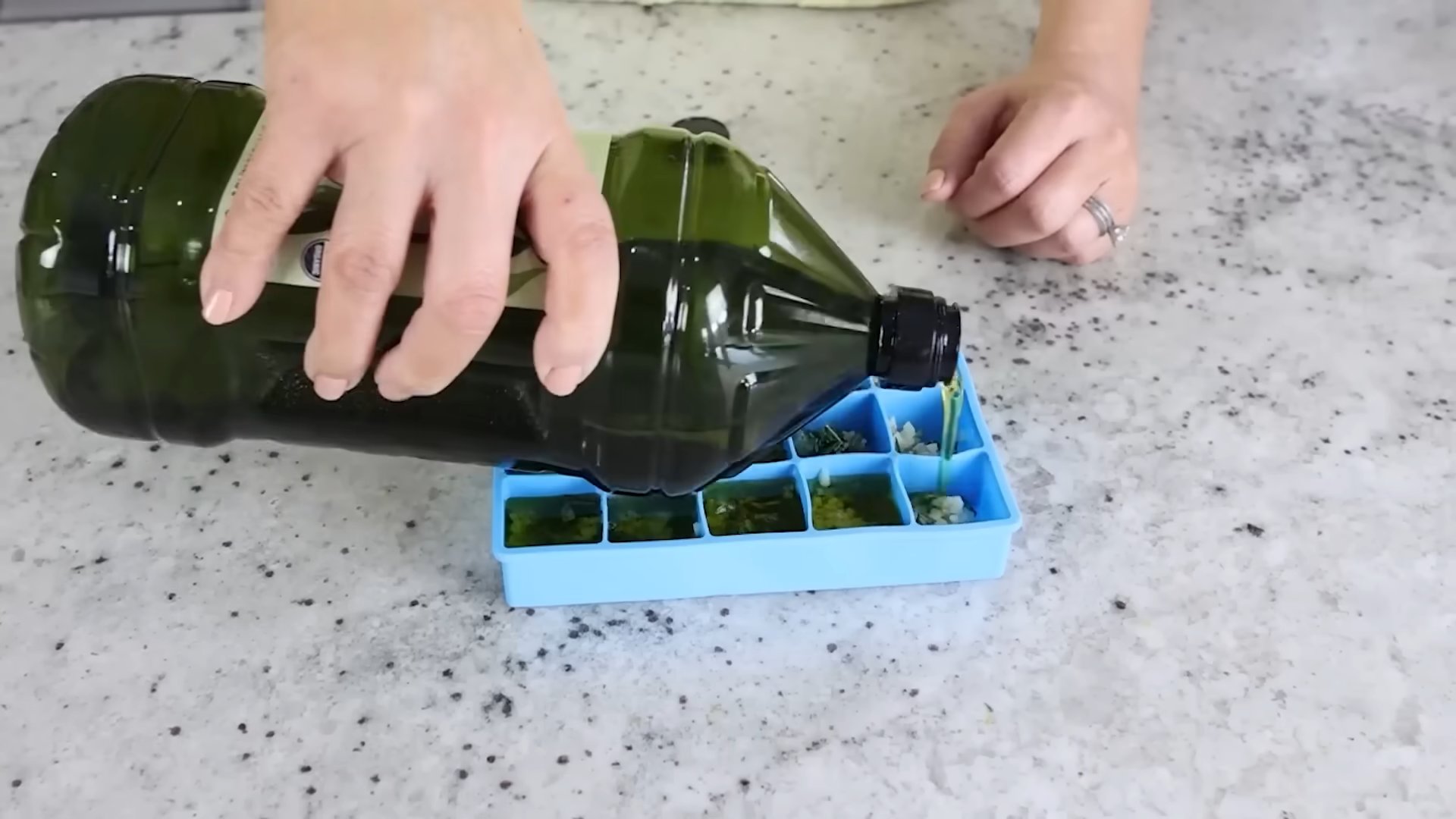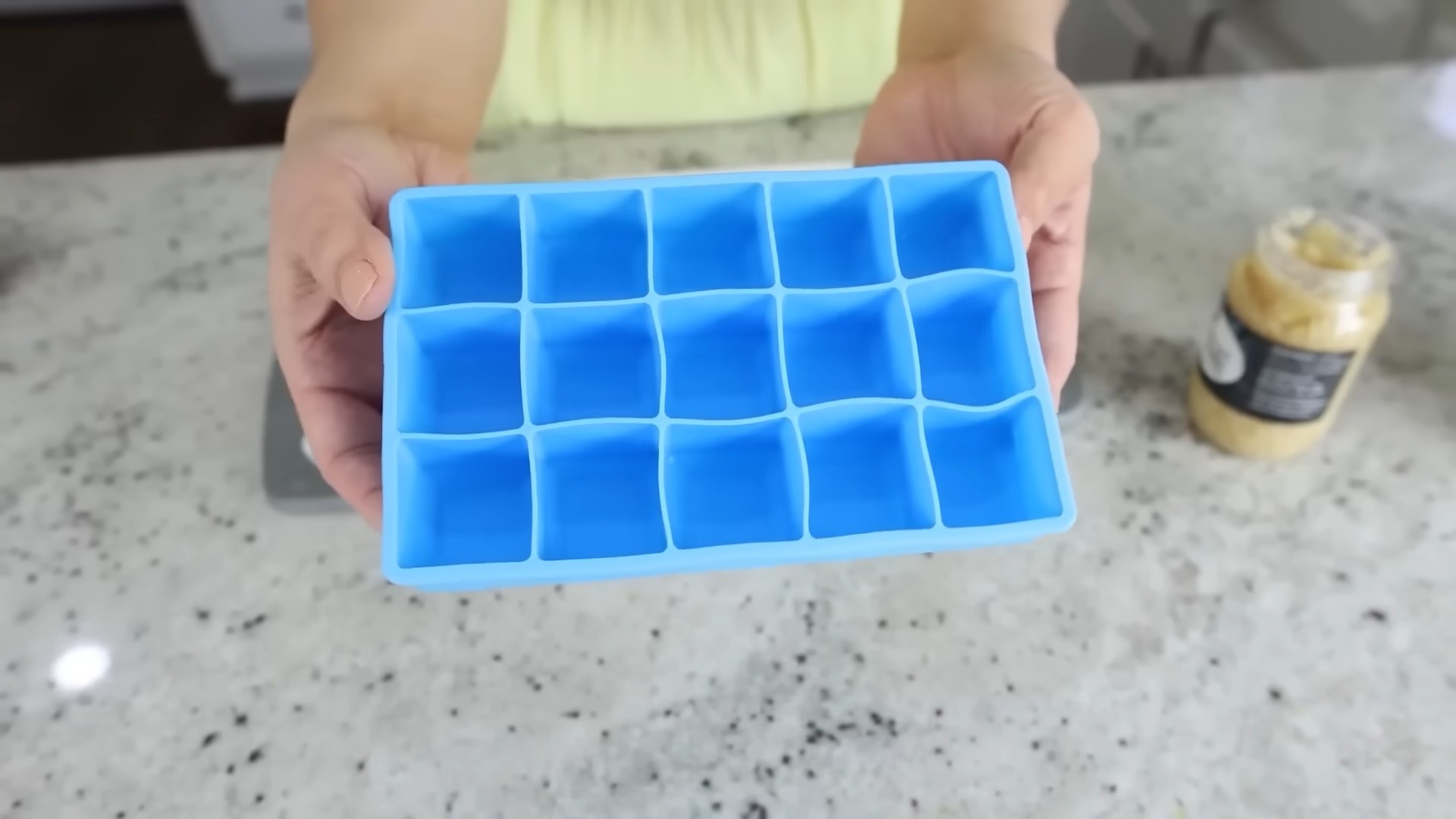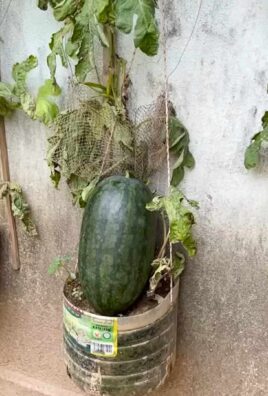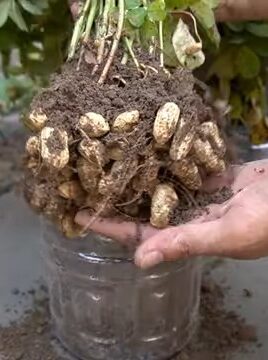Grow French Beans Easily, and watch your garden flourish with vibrant, delicious produce! Have you ever dreamed of stepping outside your back door and harvesting fresh, crisp French beans for dinner? It’s more achievable than you might think, and this DIY guide is your ticket to a bountiful bean harvest, even if you’re a complete beginner.
For centuries, beans have been a staple crop in cultures around the world, providing essential nutrients and a connection to the land. From ancient civilizations to modern-day kitchen gardens, the simple act of growing beans has nourished bodies and souls. Now, it’s your turn to participate in this time-honored tradition!
But why should you bother learning to grow French beans easily? Well, store-bought beans simply can’t compare to the flavor and satisfaction of homegrown produce. Plus, gardening is a fantastic way to relieve stress, get some exercise, and connect with nature. This DIY trick will save you money, reduce your carbon footprint, and provide you with a constant supply of fresh, healthy beans. I’m going to show you how to get started, what to avoid, and how to maximize your yield. Let’s get our hands dirty and transform your garden into a bean-growing paradise!

Grow French Beans Like a Pro: A DIY Guide
Hey there, fellow gardening enthusiasts! I’m so excited to share my tried-and-true method for growing French beans. Trust me, even if you think you have a “brown thumb,” you can totally rock this. French beans are super rewarding, producing tons of delicious beans with minimal fuss. Let’s get started!
Choosing Your Beans and Location
Before we dive into the nitty-gritty, let’s talk about bean varieties and where to plant them.
* Bush Beans vs. Pole Beans: French beans come in two main types: bush beans and pole beans. Bush beans are compact and don’t need support, making them perfect for smaller gardens or containers. Pole beans, on the other hand, are climbers and require a trellis or other support structure. I personally love the visual appeal of pole beans climbing up a trellis, but bush beans are definitely easier for beginners.
* Variety Selection: There are tons of French bean varieties to choose from! Some of my favorites include ‘Blue Lake’ (a classic bush bean), ‘Kentucky Wonder’ (a reliable pole bean), and ‘Roma II’ (a bush bean with flat, wide pods). Do a little research and pick varieties that are known to thrive in your climate.
* Sunlight: French beans need at least 6-8 hours of sunlight per day. Choose a spot in your garden that gets plenty of sunshine.
* Soil: Well-drained soil is crucial. French beans don’t like soggy feet! Amend your soil with compost or other organic matter to improve drainage and fertility. A slightly acidic to neutral pH (around 6.0-7.0) is ideal.
Getting Started: Planting Your Beans
Okay, now for the fun part – planting!
1. Prepare the Soil: Before planting, loosen the soil with a garden fork or tiller. Remove any rocks, weeds, or debris. Incorporate compost or other organic matter to improve soil fertility and drainage. I usually add a generous layer of compost – about 2-3 inches – and work it into the top 6-8 inches of soil.
2. Direct Sowing: French beans are best direct-sown, meaning you plant the seeds directly into the garden. They don’t transplant well, so starting them indoors is generally not recommended.
3. Planting Time: Wait until the danger of frost has passed and the soil has warmed up to at least 60°F (15°C). I usually plant my beans about two weeks after the last expected frost date. You can check your local weather forecast or consult a planting calendar to determine the best time to plant in your area.
4. Sowing the Seeds:
* Bush Beans: Sow seeds 1-2 inches deep and 2-4 inches apart in rows that are 18-24 inches apart.
* Pole Beans: Sow seeds 1-2 inches deep and 4-6 inches apart at the base of your trellis or support structure.
5. Watering: After planting, water the soil gently but thoroughly. Keep the soil consistently moist until the seeds germinate.
6. Mulching: Apply a layer of mulch around the plants to help retain moisture, suppress weeds, and regulate soil temperature. I like to use straw, hay, or shredded leaves.
Caring for Your Bean Plants
Once your bean plants are up and growing, here’s how to keep them happy and healthy:
1. Watering: Water regularly, especially during dry spells. Aim to keep the soil consistently moist, but avoid overwatering, which can lead to root rot. Water deeply and less frequently, rather than shallowly and often. I usually water my beans every 2-3 days, depending on the weather.
2. Fertilizing: French beans don’t need a lot of fertilizer, but a light feeding of a balanced fertilizer (like 10-10-10) can help boost growth. Apply the fertilizer according to the package directions. Avoid over-fertilizing, as this can lead to excessive foliage growth at the expense of bean production. I prefer to use a liquid seaweed fertilizer diluted in water every few weeks.
3. Weeding: Keep the area around your bean plants free of weeds. Weeds compete with the beans for water, nutrients, and sunlight. Hand-pull weeds regularly or use a hoe to cultivate the soil. Be careful not to damage the bean plants’ roots when weeding.
4. Supporting Pole Beans: If you’re growing pole beans, make sure they have adequate support. A trellis, fence, or even a teepee made of bamboo poles will work. Train the bean vines to climb the support structure by gently guiding them and tying them with twine if necessary.
5. Pest and Disease Control: Keep an eye out for common bean pests like aphids, bean beetles, and spider mites. Inspect your plants regularly and take action if you see any signs of infestation. You can try spraying the plants with insecticidal soap or neem oil. For diseases like powdery mildew or bean rust, ensure good air circulation around the plants and avoid overhead watering. You can also use a fungicide if necessary. I usually try to attract beneficial insects like ladybugs and lacewings to my garden to help control pests naturally.
Harvesting Your Bounty
The best part of growing French beans is, of course, harvesting them!
1. Harvest Time: French beans are typically ready to harvest about 50-60 days after planting. The pods should be firm, crisp, and tender. They should snap easily when bent.
2. Harvesting Technique: Harvest the beans regularly, every few days, to encourage continued production. Gently snap the beans off the plant, being careful not to damage the stems or leaves.
3. Overripe Beans: Avoid letting the beans become overripe, as they will become tough and stringy. If you find any overripe beans, remove them from the plant to encourage the production of new beans.
4. Storage: Freshly harvested French beans can be stored in the refrigerator for up to a week. For longer storage, you can blanch and freeze them.
Troubleshooting Common Problems
Even with the best care, you might encounter some problems while growing French beans. Here are a few common issues and how to address them:
* Poor Germination: If your bean seeds aren’t germinating, it could be due to several factors:
* Cold Soil: Make sure the soil is warm enough before planting.
* Poor Soil Drainage: Soggy soil can cause the seeds to rot.
* Old Seeds: Use fresh seeds for best results.
* Pests: Birds or rodents may be eating the seeds.
* Yellowing Leaves: Yellowing leaves can indicate a nutrient deficiency or a disease. Check the soil pH and nutrient levels. You may need to add fertilizer or amend the soil.
* Lack of Bean Production: If your bean plants are growing well but not producing beans, it could be due to:
* Insufficient Sunlight: Make sure the plants are getting enough sunlight.
* High Temperatures: Extreme heat can inhibit bean production.
* Pollination Problems: Although French beans are self-pollinating, sometimes insects can help with pollination.
* Pest Infestations: As mentioned earlier, keep an eye out for common bean pests and take action if you see any signs of infestation.
Extending the Harvest
Want to keep those beans coming all season long? Here are a few tips for extending your harvest:
* Succession Planting: Plant a new batch of beans every 2-3 weeks to ensure a continuous harvest.
* Choose Heat-Tolerant Varieties: If you live in a hot climate, select bean varieties that are known to tolerate high temperatures.
* Provide Shade: During the hottest part of the day, provide some shade for your bean plants. You can use shade cloth or plant them near taller plants that will provide some afternoon shade.
* Water Deeply: Water deeply and regularly to help the plants cope with heat stress.
Saving Seeds
If you want to save seeds from your French beans for next year, here’s how:
1. Select Healthy Plants: Choose healthy, vigorous plants that produce high-quality beans.
2. Allow Beans to Mature: Allow some of the beans to mature fully on the plant. The pods will become dry and brown.
3. Harvest the Seeds: Once the pods are completely dry, harvest them and shell the seeds.
4. Dry the Seeds: Spread the seeds out on a tray and allow them to dry completely for a few weeks.
5. Store the Seeds: Store the dried seeds in an airtight container in a cool, dry place.
And there you have it! Everything you need to know to grow French beans like a pro. With a little bit of care and attention, you’ll be enjoying a bountiful harvest

Conclusion
So, there you have it! Growing French beans easily doesn’t have to be a daunting task reserved for seasoned gardeners. With a few simple tricks and a little bit of patience, you can enjoy a bountiful harvest of fresh, crisp beans right from your own backyard (or balcony!). This DIY approach not only saves you money but also allows you to control the quality of your produce, ensuring you’re feeding yourself and your family the healthiest, most delicious beans possible.
The beauty of this method lies in its adaptability. Feel free to experiment with different varieties of French beans. Bush beans are perfect for smaller spaces and require less support, while pole beans offer a higher yield and can create a beautiful green screen if trained up a trellis or fence. Consider adding companion plants like marigolds or nasturtiums to deter pests and attract beneficial insects. You can also adjust the soil composition based on your local conditions. If your soil is heavy clay, amend it with compost and sand to improve drainage. If it’s sandy, add organic matter to help retain moisture.
This DIY method for growing French beans is a must-try because it’s cost-effective, environmentally friendly, and incredibly rewarding. Imagine the satisfaction of serving a meal featuring beans you nurtured from seed to table! Plus, fresh, homegrown beans taste infinitely better than anything you can buy at the store.
Don’t be afraid to get your hands dirty and embrace the process. Even if you encounter a few challenges along the way, remember that gardening is a learning experience. Each season brings new opportunities to refine your techniques and improve your yield.
We encourage you to give this DIY trick a try. Start small, perhaps with just a few plants, and gradually expand your garden as you gain confidence. And most importantly, share your experience with us! We’d love to hear about your successes, your challenges, and any variations you’ve discovered. Post photos of your flourishing bean plants, share your favorite French bean recipes, and let’s create a community of passionate home gardeners. Your insights could inspire others to embark on their own bean-growing adventures. Happy gardening!
Frequently Asked Questions (FAQs)
Q: What is the best time of year to plant French beans?
A: French beans are warm-season crops, so the best time to plant them is after the last frost when the soil has warmed up to at least 60°F (15°C). In most regions, this is typically in late spring or early summer. You can also start seeds indoors a few weeks before the last frost to get a head start, but be sure to harden them off before transplanting them outdoors. For a continuous harvest, consider succession planting, sowing new seeds every 2-3 weeks throughout the growing season.
Q: What kind of soil is best for growing French beans?
A: French beans thrive in well-drained, fertile soil with a pH between 6.0 and 7.0. Amend your soil with compost or other organic matter to improve drainage and fertility. Avoid heavy clay soils, as they can become waterlogged and inhibit root growth. If your soil is particularly poor, consider growing your beans in raised beds or containers filled with a high-quality potting mix.
Q: How much sunlight do French beans need?
A: French beans need at least 6-8 hours of direct sunlight per day to thrive. Choose a planting location that receives plenty of sunlight throughout the day. If you live in a particularly hot climate, some afternoon shade can be beneficial to prevent the plants from scorching.
Q: How often should I water my French bean plants?
A: Water your French bean plants regularly, especially during dry periods. Aim to keep the soil consistently moist but not waterlogged. Water deeply at the base of the plants, avoiding wetting the foliage, which can increase the risk of fungal diseases. Mulching around the plants can help retain moisture and suppress weeds.
Q: Do French beans need fertilizer?
A: French beans are relatively light feeders, but they can benefit from a balanced fertilizer applied at planting time and again when the plants begin to flower. Choose a fertilizer that is low in nitrogen, as too much nitrogen can promote leafy growth at the expense of bean production. Bone meal or rock phosphate can be added to the soil to provide phosphorus, which is essential for root development and flowering.
Q: What are some common pests and diseases that affect French beans?
A: Common pests that can affect French beans include aphids, bean beetles, and slugs. Aphids can be controlled with insecticidal soap or a strong spray of water. Bean beetles can be handpicked or treated with neem oil. Slugs can be deterred with beer traps or copper tape. Common diseases include powdery mildew and bean rust. Preventative measures include providing good air circulation, avoiding overhead watering, and using disease-resistant varieties.
Q: How do I know when my French beans are ready to harvest?
A: French beans are typically ready to harvest about 50-60 days after planting. The pods should be firm, crisp, and snap easily when bent. Harvest regularly to encourage continued production. Overripe beans will become tough and stringy.
Q: Can I grow French beans in containers?
A: Yes, French beans can be successfully grown in containers. Choose a container that is at least 12 inches deep and wide. Use a high-quality potting mix and provide adequate drainage. Bush bean varieties are generally better suited for container growing than pole beans. Be sure to provide support for pole beans if you choose to grow them in containers.
Q: How can I save seeds from my French bean plants?
A: To save seeds from your French bean plants, allow the pods to dry completely on the vine. Once the pods are dry and brittle, shell the beans and store them in an airtight container in a cool, dry place. Be sure to label the seeds with the variety and date. Only save seeds from healthy, disease-free plants.
Q: What are some good companion plants for French beans?
A: Good companion plants for French beans include marigolds, nasturtiums, rosemary, and thyme. Marigolds and nasturtiums deter pests, while rosemary and thyme repel bean beetles. Avoid planting French beans near onions or garlic, as they can inhibit bean growth.




Leave a Comment